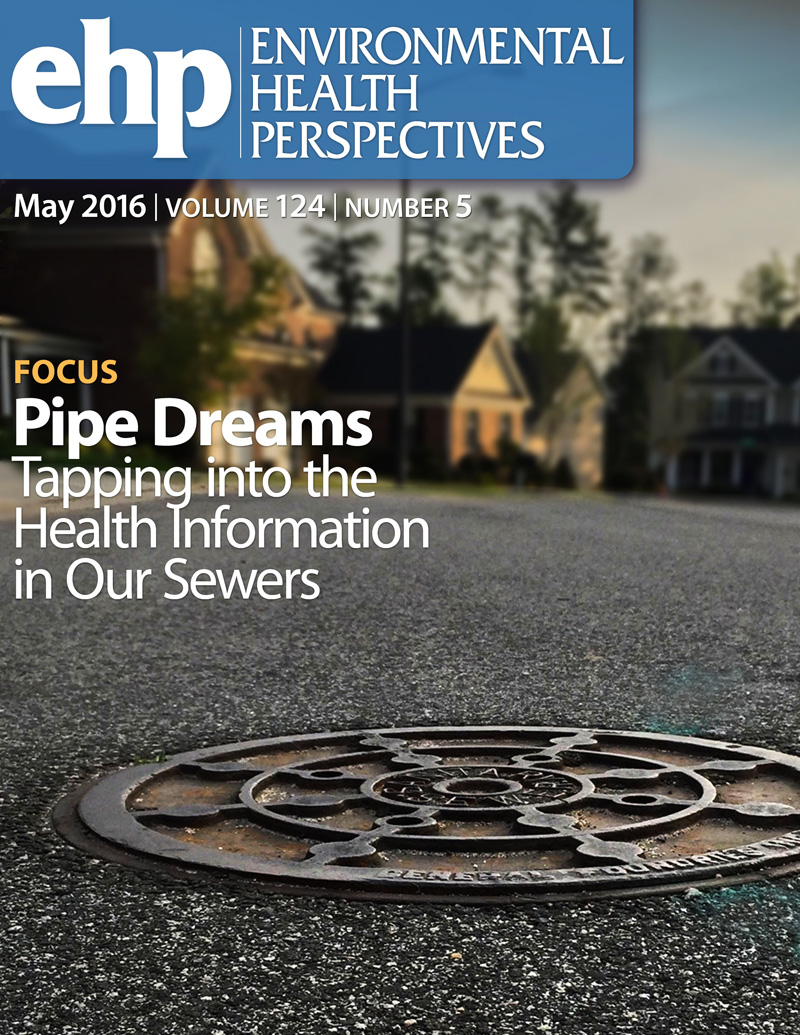将转录组学和靶向新方法整合到化学生物活性筛选的分层框架中。
IF 9.8
1区 环境科学与生态学
Q1 ENVIRONMENTAL SCIENCES
引用次数: 0
摘要
商业和环境中有成千上万种化学品,快速识别潜在危害是一项迫切需要。将广泛的分子谱分析与体外靶向分析相结合,如高通量转录组学(HTTr)和受体筛选分析,可以提高对与不良后果相关的关键分子靶标的干扰的化学物质的识别。我们旨在将转录组读数与单个分子靶标联系起来,并在化学危害优先级的概念验证框架中将转录组预测与正交受体水平分析相结合。方法通过TempO-Seq在U-2 OS和HepaRG细胞系中生成的转录组学图谱,用于开发由对不同分子靶标参考化学物质具有独特反应的基因组成的特征。这些特征应用于两种细胞系中通过HTTr筛选的75种参考化学物质和1126种非参考化学物质。通过比较每种化学物质的效力估计值与大部分转录组生物活性来确定每种特征的选择性生物活性。利用美国环保局ToxCast项目的正交试验数据,证实了转录组学预测的化学物质的靶生物活性和选择性。从HTTr中选取了37种选择性作用的化学物质,这些化学物质没有足够的正交数据,使用五种受体水平试验中的一种进行了前瞻性测试。结果在筛选的1,126种非参比化学物质中,201种在至少一种转录组特征中表现出选择性生物活性,57种被确认为选择性核受体激动剂。每个标记的化学物质的生物活性与正交试验的生物活性显著相关,在95.4%的标记优先化学物质中,基于标记的出发点与生物途径改变浓度相同或更敏感。前瞻性分析发现,37种化学物质中有18种(49%)没有事先正交分析数据,对预测的受体具有生物活性。我们的工作表明,在分层框架中整合转录组学与靶向正交试验可以通过告知假定的分子靶点和优先进行进一步测试的化学物质来支持下一代风险评估。https://doi.org/10.1289/EHPXXXXX。本文章由计算机程序翻译,如有差异,请以英文原文为准。
Integrating Transcriptomic and Targeted New Approach Methodologies into a Tiered Framework for Chemical Bioactivity Screening.
BACKGROUND
With thousands of chemicals in commerce and the environment, rapid identification of potential hazards is a critical need. Combining broad molecular profiling with targeted in vitro assays, such as high-throughput transcriptomics (HTTr) and receptor screening assays, could improve identification of chemicals that perturb key molecular targets associated with adverse outcomes.
OBJECTIVES
We aimed to link transcriptomic readouts to individual molecular targets and integrate transcriptomic predictions with orthogonal receptor-level assays in a proof-of-concept framework for chemical hazard prioritization.
METHODS
Transcriptomic profiles generated via TempO-Seq in U-2 OS and HepaRG cell lines were used to develop signatures comprised of genes uniquely responsive to reference chemicals for distinct molecular targets. These signatures were applied to 75 reference and 1,126 non-reference chemicals screened via HTTr in both cell lines. Selective bioactivity towards each signature was determined by comparing potency estimates against the bulk of transcriptomic bioactivity for each chemical. Chemicals predicted by transcriptomics were confirmed for target bioactivity and selectivity using available orthogonal assay data from US EPA's ToxCast program. A subset of 37 selectively acting chemicals from HTTr that did not have sufficient orthogonal data were prospectively tested using one of five receptor-level assays.
RESULTS
Of the 1,126 non-reference chemicals screened, 201 demonstrated selective bioactivity in at least one transcriptomic signature, and 57 were confirmed as selective nuclear receptor agonists. Chemicals bioactive for each signature were significantly associated with orthogonal assay bioactivity, and signature-based points-of-departure were equally or more sensitive than biological pathway altering concentrations in 95.4% of signature-prioritized chemicals. Prospective profiling found that 18 of 37 (49%) chemicals without prior orthogonal assay data were bioactive against the predicted receptor.
DISCUSSION
Our work demonstrates that integrating transcriptomics with targeted orthogonal assays in a tiered framework can support Next Generation Risk Assessment by informing putative molecular targets and prioritizing chemicals for further testing. https://doi.org/10.1289/EHPXXXXX.
求助全文
通过发布文献求助,成功后即可免费获取论文全文。
去求助
来源期刊

Environmental Health Perspectives
环境科学-公共卫生、环境卫生与职业卫生
CiteScore
14.40
自引率
2.90%
发文量
388
审稿时长
6 months
期刊介绍:
Environmental Health Perspectives (EHP) is a monthly peer-reviewed journal supported by the National Institute of Environmental Health Sciences, part of the National Institutes of Health under the U.S. Department of Health and Human Services. Its mission is to facilitate discussions on the connections between the environment and human health by publishing top-notch research and news. EHP ranks third in Public, Environmental, and Occupational Health, fourth in Toxicology, and fifth in Environmental Sciences.
 求助内容:
求助内容: 应助结果提醒方式:
应助结果提醒方式:


